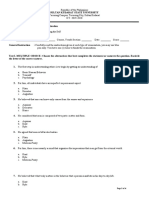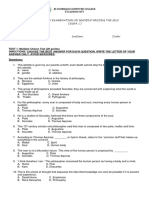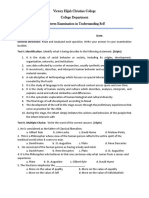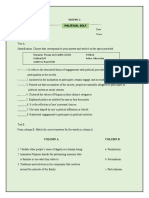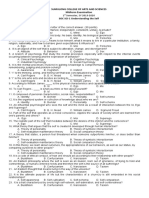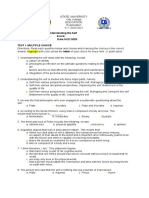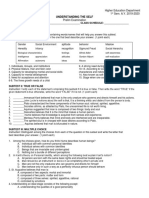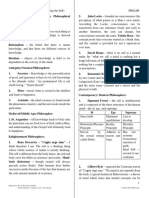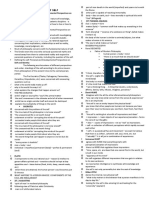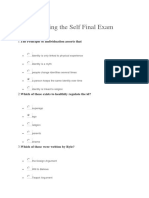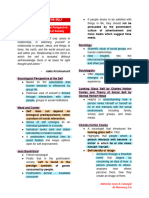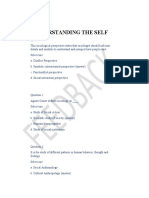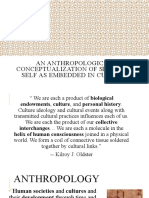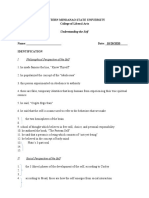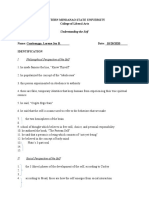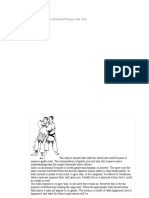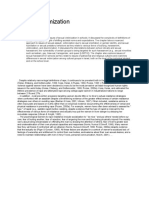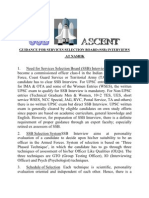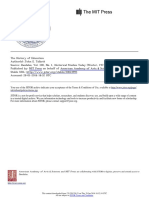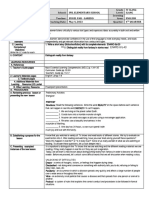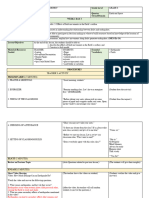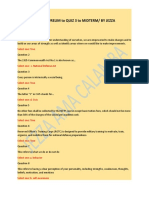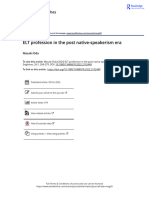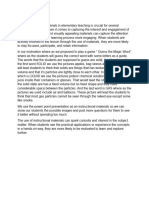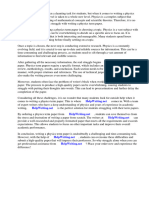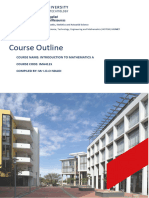0% found this document useful (0 votes)
3K views3 pagesQuiz-Assignment For Understanding The Self
1. The document discusses different philosophical, social, and psychological perspectives on the self.
2. Key figures mentioned include Socrates, John Locke, Stanley Milgram, and Gilbert Ryle from a philosophical lens as well as Cooley, Mead, and Vygotsky from a social perspective.
3. Psychologically, the document covers defense mechanisms, Jungian archetypes, and Erikson's stages of psychosocial development.
Uploaded by
Asuna YuukiCopyright
© © All Rights Reserved
We take content rights seriously. If you suspect this is your content, claim it here.
Available Formats
Download as DOCX, PDF, TXT or read online on Scribd
0% found this document useful (0 votes)
3K views3 pagesQuiz-Assignment For Understanding The Self
1. The document discusses different philosophical, social, and psychological perspectives on the self.
2. Key figures mentioned include Socrates, John Locke, Stanley Milgram, and Gilbert Ryle from a philosophical lens as well as Cooley, Mead, and Vygotsky from a social perspective.
3. Psychologically, the document covers defense mechanisms, Jungian archetypes, and Erikson's stages of psychosocial development.
Uploaded by
Asuna YuukiCopyright
© © All Rights Reserved
We take content rights seriously. If you suspect this is your content, claim it here.
Available Formats
Download as DOCX, PDF, TXT or read online on Scribd
/ 3



